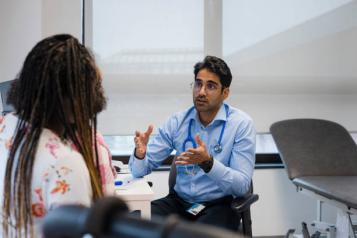Talking therapies: What to expect and how it can help

The service offers a range of evidence-based therapies tailored to individual needs, helping people manage their mental health and improve their quality of life.
How to access the service
Accessing North Yorkshire Talking Therapies is simple and flexible. Individuals can refer themselves directly by completing an online form or contacting the service, or they can be referred by their GP. Once referred, the process begins with an initial assessment to determine the most suitable therapeutic approach.
What to expect during the process
- Initial assessment
During the initial assessment, a trained therapist will discuss the individual’s current challenges, medical history, and personal circumstances. This comprehensive evaluation ensures the development of a personalised treatment plan. - Treatment plan
Following the assessment, the therapist will propose a treatment plan, which outlines the type of therapy, session frequency, and expected duration. Typically, individuals receive six 30-minute sessions spread over a 12-week period. These sessions can be conducted via telephone, face-to-face, or online, depending on the individual's preferences. - Confidentiality
North Yorkshire Talking Therapies adheres to strict NHS confidentiality standards. Personal information is shared only with consent, except in circumstances where there is a concern for immediate safety.
Therapies offered
The service provides a variety of therapeutic options, including:
- Cognitive behavioural therapy: A structured, time-limited therapy focusing on identifying and changing negative thought patterns and behaviours.
- Guided self-help: Support in utilising self-help materials to effectively manage symptoms.
- Group therapy: Facilitated sessions where individuals with similar concerns can share experiences and coping strategies.
- Online therapy: Access to digital platforms for therapy, offering flexibility and convenience.
What to expect
Treatment
The type of treatment people may receive from talking therapies depends very much on individual symptoms. We try to use the least intrusive method of care possible to treat people. This means that the patient is generally offered a low intensity therapy first. Examples of low intensity treatment would include computerised cognitive behavioural therapy psycho-educational courses, guided self-help over the phone or face to face.
If low intensity therapies are unsuccessful or inappropriate then people can be ‘stepped up’ to a high intensity therapy. This often takes the form of one-to-one cognitive behavioural therapy or eye movement desensitisation and reprocessing.
Where talking therapies is not the most suitable service we can signpost you to alternatives where available.
Who can benefit?
The service is designed to support people dealing with:
Patient groups
Mental health and wellbeing is important for everyone. The NHS's talking therapy service help people improve their current situation through a series of treatments, designed to make positive improvements and support their recovery.
There are some groups who we know are under-represented in talking therapies services or who experience specific problems with their mental health and wellbeing. Their teams have developed an expertise in working with the following groups (click on the links to visit the NHS website to find out more):
Why choose talking therapies?
The NHS committed to providing compassionate, professional, and accessible support. The talking therapies service creates a non-judgmental environment where individuals can work together with skilled therapists to overcome mental health challenges and achieve positive outcomes.
How to get support
For more information or to begin the journey towards improved mental health, people can visit the North Yorkshire Talking Therapies website.


